Werewolves in the Movies
There has been some fine vampire and zombie makeup in movies, thanks in large part to the fact that vampires and zombies retain their human proportions. But werewolves have proven difficult to master for Hollywood directors and special effects makeup artists. Not only are a werewolf's proportions different, but it possesses a feral muscularity that is difficult to fake with CGI. The sight of a werewolf in real life is beyond terrifying; all too often, the sight of a werewolf in a movie is beyond disappointing.
Below is a brief overview of the history of werewolf makeup and special effects in movies.
|
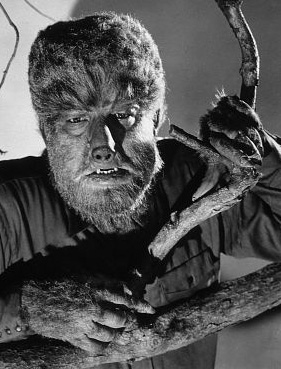 |
The Wolfman (1941)
There had been a handful of werewolf movies before The Wolfman, but this Universal release was profoundly influential on the genre and set the tone for werewolf makeup for the next several decades. Unfortunately, the monster, played by Lon Chaney Jr., is not really wolflike in any way. He resembles more closely one of the unfortunate people afflicted with hypertrichosis, a condition characterized by excessive body hair. Transformation is conveyed via a series of dissolves and the whole process is rather static.
|
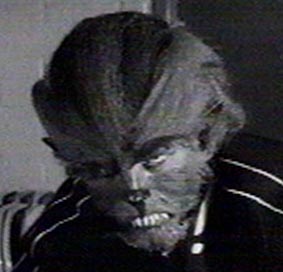 |
I Was a Teenage Werewolf (1957)
This is progress? Sixteen years after The Wolfman shuffled across movie screens, Michael Landon plays the title teen in this popular film. Makeup and transformation effects are still stuck in the Dark Ages. It would be almost 25 years before this version of a werewolf evolved to something more accurate.
|
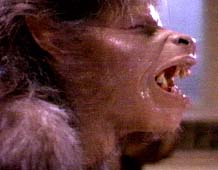 |
American Werewolf in London (1981)
Thanks to the work of Rick Baker, American Werewolf represents a major leap forward in werewolf makeup and effects. The wolf here moves on all fours and is much more wolf-like in appearance than in previous movies. The movie also does a much better job at capturing the agony of transformation. As for the head of the wolf, it was a vast improvement over earlier work, although the snout was too short and the lower jaw too thick.
|
 |
Wolf (1994)
Given this movie's top-shelf pedigree, it was disappointing to see that the filmmakers reverted back to the old Lon Chaney Jr. days by portraying the werewolf as essentially a hirsute man running about on two legs. I guess when you pay a star like Jack Nicholson the big bucks, you want him to get plenty of face time. But the dimensions of a real werewolf's head are nothing like those of a human's.
|
 |
American Werewolf in Paris (1997)
This long-delayed sequel to American Werewolf in London was not a good movie at all, but it's useful to look at as a barometer of how special effects werewolf makeup was changing from modeling to CGI. This was not, as far as I'm concerned, a welcome change, but the fact is it's just too difficult to make a model move in a rapid, convincing fashion. By the way, American Werewolf in Paris gets an extra point deduction for creating a wolf that looks like it has a mullet.
|
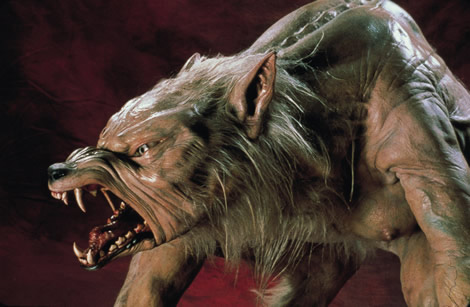 |
Ginger Snaps (2000)
Ginger Snaps showed how lower budget movies could beat their bigger budget cousins in the werewolf game by relying on shadows, suggestion and sound effects to create an effective beast. Alas, when the werewolf finally does show itself, it is disappointingly plastic-looking and appears to be an albino.
|
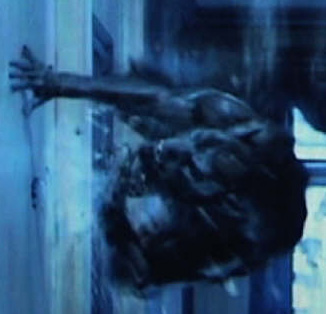 |
Underworld (2003)
There's no question that the quality of CGI has been improving, and the Underworld filmmakers tried to further blur the line between fiction and reality by having the CGI scenes take place in darkened settings. As for the beasts, they are somewhat simian-like, with oval faces and short snouts. Also, they live in cities and run along the sides of walls. And note that the werewolves appear to have human-like hands. In truth, werewolves do not have hands; they have paws.
|
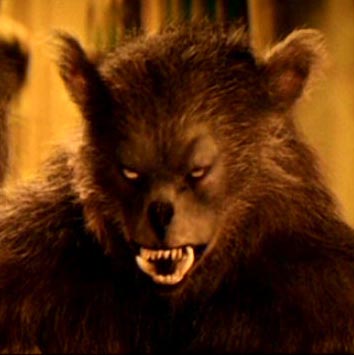 |
Cursed (2005)
This movie continues the modern trend of using models in close shots and CGI when the werewolf is moving. The wolf in this movie looks more like a bear and, although the moviemakers got the general proportions right, it was a bit undersized. Real werewolves range from seven to nine feet tall when standing on their hind legs, and they can weigh close to 1,000 pounds.
|
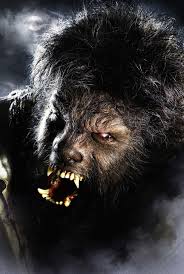 |
The Wolf Man (2010)
This project was often described as a throwback to the classic Universal horror movies of the past, and the makeup reflects that. The title character, played by Benicio Del Toro, has the round, prominent cranium of a human rather than the narrow, elongated skull of a real werewolf. In addition, the beast in the movie has no snout. The CGI has improved, but still fails to captures the heaviness of the werewolf when in motion.
|
 |
Twilight (2008-2012)
The Twilight Wiki tells me that these creatures are actually shape-shifters, but let's call them werewolves for the sake of this discussion. While most move werewolves tend to retain human proportions, the Twilight series went much too far in the other direction by creating werewolves that are essentially jumbo-sized wolves. Other than their size and CGI rendering, there is little to distinguish them from actual wolves.
|
|
| | © 2001-2015 Dango Productions, Inc. |













